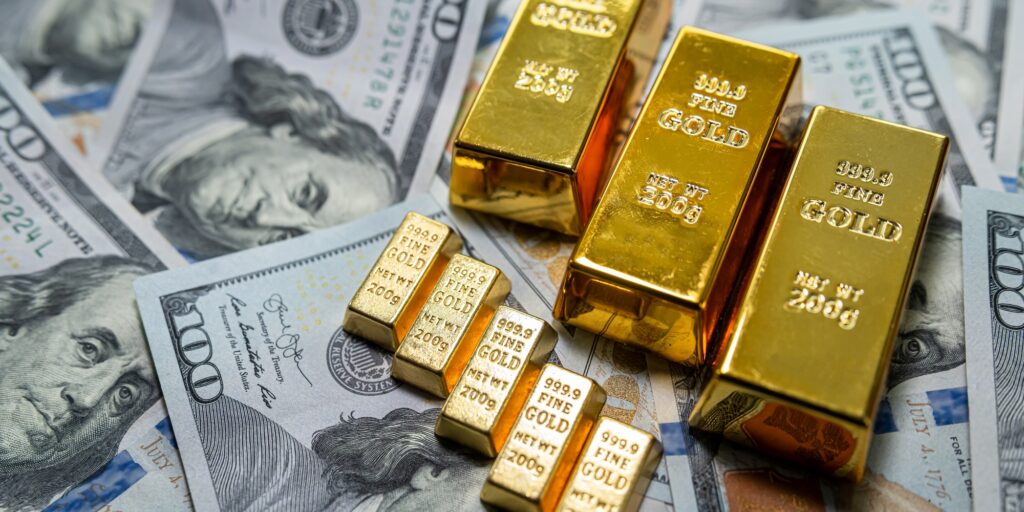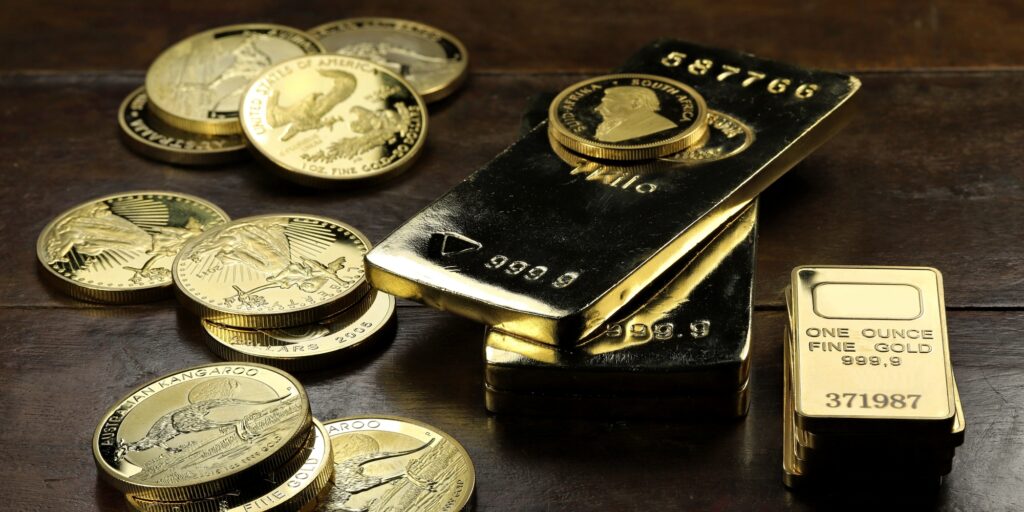Last updated: October 2, 2025
Introduction to Gold Market Trends 2025
Gold market trends 2025 have drawn attention from researchers and historians alike, as public data reveals patterns in demand, supply, and economic contexts. As of early October 2025, recent observations place gold prices in the approximate range of $3,800 per ounce, reflecting variations noted in exchange records. This follows a year-to-date increase of around 45% from starting levels near $2,700 per ounce earlier in the year. These figures are drawn from spot market data and provide a snapshot for educational review.
Understanding gold market trends 2025 requires examining both contemporary observations and long-standing historical patterns. Gold has served as a medium of exchange and reserve asset for millennia, with records from ancient civilizations like the Egyptians and Romans documenting its use in trade and governance. In modern times, the World Gold Council tracks quarterly demand, noting total gold demand reached 1,249 tons in Q2 2025, a 3% increase year-over-year on a tonnage basis, though value terms rose 45% to $132 billion due to price changes. Such data offers insights into how supply and demand interact over time, without implying future directions.
This overview explores gold market trends 2025 through factual lenses: central bank activities, monetary policy influences, geopolitical and industrial factors, mining sector dynamics, technical historical patterns, and reported analyst perspectives. By drawing on public reports from sources like the World Gold Council and IMF, we highlight recurring economic cycles that have shaped gold’s role in global finance. Historical examples, from the Gold Standard era to post-war recoveries, illustrate these trends.
The integration of gold as a precious metal into financial systems evolved significantly in the 19th century, when the classical Gold Standard linked currencies to fixed gold amounts, promoting international trade stability from 1870 to 1914. The system’s suspension during World War I marked a pivot to fiat currencies, influencing subsequent market behaviors. In 2025, gold market trends continue to reflect these foundational shifts, with institutional and investor interest documented in quarterly updates. For instance, the LBMA gold price averaged $2,860 per ounce in Q1 2025, setting multiple record highs. This provides context for studying demand drivers like ETF inflows, which offset weaknesses in other areas during Q2, where U.S. demand fell 34% quarter-on-quarter to 124 tons.
Historical Market Context in Gold Market Trends 2025
To contextualize gold market trends 2025, consider the long arc of economic history, where monetary policies and trade expansions have repeatedly intersected with precious metals. Global monetary supply observations in 2025, with M2 measures showing steady growth in major economies, echo patterns from earlier eras, where liquidity adjustments influenced market behaviors.
One early example is the Dutch Golden Age in the 17th century, where trade expansions via the Dutch East India Company facilitated gold flows across continents, enhancing its role in global commerce as documented in company archives. This period’s emphasis on precious metals in shipping manifests highlights early patterns of reserve accumulation. Similarly, post-World War II Britain utilized gold in international settlements under the Bretton Woods system, with reserves supporting reconstruction efforts as detailed in Bank of England histories. These measures facilitated trade stability but illustrated gold’s utility in multilateral agreements.
In the United States, the 19th century saw railroad expansions tied to international gold imports, contributing to the growth of mint operations under the Coinage Act of 1792, which established the U.S. Mint’s role in standardizing gold eagle coins at $10 face value. Mint records document how this era’s expansions in production supported domestic and export demands. The Gold Standard Act of 1900 formalized the dollar’s gold backing at $20.67 per ounce, stabilizing trade until adjustments in the 1930s amid global realignments.
The interwar period, following World War I, saw shifts in gold flows as nations rebuilt reserves, with the U.S. accumulating under the Gold Reserve Act of 1934, which centralized holdings at the Treasury. Bank for International Settlements reports noted how these accumulations aided international settlements. By the 1970s, the end of Bretton Woods convertibility in 1971 opened markets to floating rates, with gold trading freely post the London Gold Fix liberalization. Federal Reserve archives detail how this transition expanded private participation, paralleling 2025’s ETF accessibility.
In gold market trends 2025, these cycles inform observations like the Federal Reserve’s federal funds rate adjustment to 4.00%-4.25% in September 2025, restating a public announcement amid evolving economic indicators. Historical parallels, such as the 1980s policy shifts under Volcker, show how rate environments influence liquidity without predictable outcomes. Gold’s H1 2025 performance of +26% in USD terms, reaching double-digit returns across currencies, aligns with such contexts but remains observational.
Expanding on 20th-century trends, the 2008 financial crisis prompted central bank liquidity measures, with the Fed’s balance sheet expanding from $900 billion to $4.5 trillion by 2014. World Gold Council data indicates ETF launches in 2003 facilitated this accessibility, with holdings peaking at 3,000 tonnes in 2012. The COVID-19 era mirrored this, with gold demand surging 3% in 2020 to 4,974 tonnes amid global adjustments. These episodes underscore gold’s documented presence in response to policy expansions, providing educational value for reviewing 2025’s quarterly averages. The 1990s liberalization of gold markets in India, for instance, increased retail participation, with imports rising 15% annually through the decade per government reports, setting precedents for emerging market dynamics observed today.
Further, the 1950s marked a postwar boom in gold fabrication for industrial uses, with U.S. Mint production ramping to support electronics, as tracked in Geological Survey annuals. This period’s advancements in refining techniques, like the introduction of electrolytic processes, enhanced purity standards still in use, illustrating technological progress in supply chains.
Central Bank Activities in Gold Market Trends 2025
Central banks feature prominently in gold market trends 2025, with public disclosures revealing reserve management patterns. The World Gold Council reports net purchases exceeding 1,000 tons annually since 2022, continuing into 2025 with 244 tons in Q1 and 166 tonn in Q2. Emerging markets led, with China, India, and Poland adding significant volumes; for example, Poland reported 67 tons year-to-date through mid-2025.
A 2025 survey found 44% of central banks actively managing gold reserves, up from 37% in 2024, citing diversification in public statements. This follows historical precedents, like the 1960s London Gold Pool, where U.S. and European banks coordinated to maintain price stability at $35 per ounce. Post-Bretton Woods, reserves shifted toward gold accumulation, with IMF data showing global holdings at 36,000 tons by 2020.
In Q3 2025 preliminary data, July net allocations reached 10 tons, per exchange reports. Country-specific trends include India’s imports rising with festival seasons, while China’s state banks supported local sourcing. Historically, the 1999 Washington Agreement limited sales to 400 tons annually, stabilizing markets after earlier adjustments. These agreements, renewed through 2014, illustrate coordinated reserve strategies.
U.S. Federal Reserve holdings, stable at 8,133 tons since 1971, contrast with emerging market growth, per Treasury audits. In 2025, ETF inflows—reaching levels unseen since 2021—complement this, with bar and coin demand up in Q2 despite price pressures. Such interactions highlight gold’s reserve utility, as seen in the Eurozone’s 1999 formation, where gold backed 15% of reserves initially. The 1980s saw similar diversification efforts by the Bank of Japan, accumulating 765 tons amid yen internationalization, per annual reports.
Monetary Policy and Debt Patterns Influencing Gold Market Trends
Monetary policy shapes gold market trends 2025, with historical expansions providing backdrop. The U.S. balance sheet remains elevated post-2020, at over $7 trillion as of Q3 2025, per Fed releases. This recalls the 1970s, when M1 money supply grew 10% annually, correlating with gold’s market presence amid policy shifts.
Global monetary observations mirror the 2008 expansions, when QE programs began. Japan’s 1990s zero rates boosted gold imports 20% yearly through 2000. In Europe, the 2010-2012 period saw ECB liquidity measures supporting reserve stability.
For 2025, the Fed’s September rate cut to 4.00%-4.25% restates policy amid CPI observations. Historical rate cycles, like 1981’s adjustments, show varied metal responses. Past performance is not a guarantee of future results. Gold demand in Q2 2025 value terms hit $132 billion, driven by price averages. The 1960s U.S. operations twist, lowering long-term rates, influenced gold flows under fixed exchange, per Fed minutes.
Geopolitical and Industrial Factors in Gold Market Trends 2025
Geopolitical events historically influence gold market trends, with 2025 observations continuing this. The World Gold Council notes uncertainties added to Q2 ETF inflows, though specifics remain observational. Past examples include the 1973 Yom Kippur War, spiking oil and gold 300% by 1974. The 1990 Gulf War saw a 10% premium, per LBMA data.
Industrial demand provides stability; Q2 2025 technology sector use rose 3%, per council reports. Jewelry, half of demand, rebounded in Asia, with India up during festivals. Silver’s industrial role in solar grew 15% historically since 2010. The 2000s commodity supercycle saw gold fabrication for dentistry and aerospace double, per USGS data.
Educational Insights from Gold Market Trends 2025
Examining gold market trends 2025 through an educational lens reveals the intricate interplay of historical precedents and contemporary data, offering a deeper understanding of gold’s enduring place in economic narratives. Over centuries, gold has transitioned from a tangible currency in ancient trade routes—such as the Silk Road exchanges where it facilitated commerce between Rome and China—to a cornerstone of modern reserve systems. This evolution underscores gold’s adaptability, as evidenced by its role in stabilizing post-colonial economies in the 19th century, where nations like Brazil and Mexico utilized gold in minting to support export trades amid commodity fluctuations.
In the context of 2025, these insights extend to how supply chains and technological advancements intersect with traditional demand. For instance, the World Gold Council’s Q2 report highlights a nuanced balance: while bar and coin investments declined 11% quarter-on-quarter to 286 tons, central bank acquisitions provided a counterweight, maintaining overall momentum in tonnage terms.
Historically, similar offsets occurred during the 1990s Asian market adjustments, when Thailand’s currency float in 1997 prompted regional gold movements, boosting demand by 20% in Southeast Asia as per IMF retrospectives. Such events illustrate how localized shifts can ripple globally, informing our view of 2025’s festival-driven jewelry upticks in India, which contributed to a 5% year-on-year rise in that category.
Furthermore, educational value lies in recognizing gold’s non-correlated behavior during policy expansions. The 1920s U.S. monetary experiments under the Federal Reserve Act of 1913 centralized banking, influencing gold flows as regional banks adjusted reserves, a pattern echoed in later international settlements. In 2025, with global inflation stabilizing around 3% in advanced economies, these historical vignettes remind us of gold’s documented utility in monetary frameworks, though outcomes vary widely. The IMF’s 2025 reports note emerging market reserve strategies, paralleling the 1980s efforts by the Bank of International Settlements to coordinate liquidity, where gold swaps facilitated cross-border adjustments.
Technological integrations add another layer; gold’s conductivity in electronics, comprising 7% of 2025 demand per council estimates, builds on its 20th-century shift from pure monetary to hybrid roles. During the 1950s transistor boom, gold plating in circuits became standard, per U.S. Geological Survey data, much like today’s applications in 5G infrastructure. This dual nature—monetary and industrial—has buffered gold against pure speculation, as seen in the 2013 policy signals when industrial demand absorbed 10% of supply variations, per LBMA analyses.
Risk considerations further enrich these insights; historical consolidations, like the 1980-1999 period where markets adjusted amid rate environments, contrast with 2025’s supportive ETF structures, holding over 3,200 tons globally. The 2013 adjustment dropped prices 28% in months yet recovered via diversified holdings. In 2025, recycling supply at 335 tons in Q2—up 5%—mirrors post-2008 trends, where scrap provided 25% of inflows during expansions. The 1960s gold leasing markets, introduced by the Bank of England, allowed temporary transfers, influencing liquidity as documented in central bank yearbooks.
Ultimately, gold market trends 2025 encapsulate a tapestry of resilience and adaptation, from ancient mints to digital ETFs. By studying these patterns through public data, one gains appreciation for gold’s multifaceted history, encouraging further exploration of archival resources. This educational perspective fosters informed curiosity about economic continuities, reminding us that while patterns recur, each era’s nuances demand careful, independent review.
For more, explore World Gold Council resources:
- Gold Mid-Year Outlook 2025
- Gold Price Performance & Data
- Gold Demand & Supply by Country
- Gold Spot Prices & Market History
Disclaimer: This article is for educational purposes only. Gold Silver Markets is not a financial advisor, and this content does not constitute investment advice. Gold markets involve risks, including price fluctuations. Always consult a qualified financial professional before making decisions. Past performance is not a guarantee of future results, and nobody can accurately predict where prices will go in the future.



